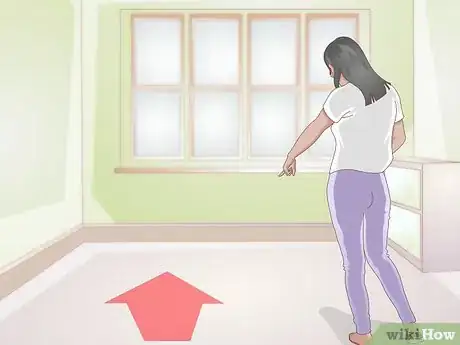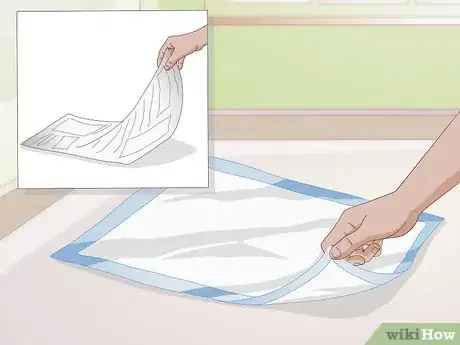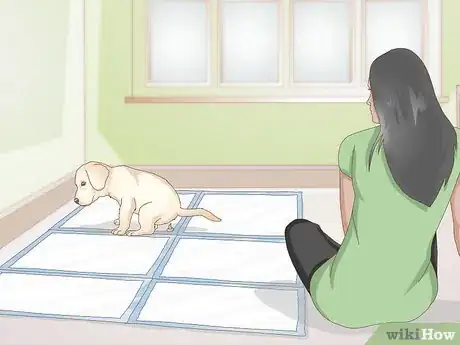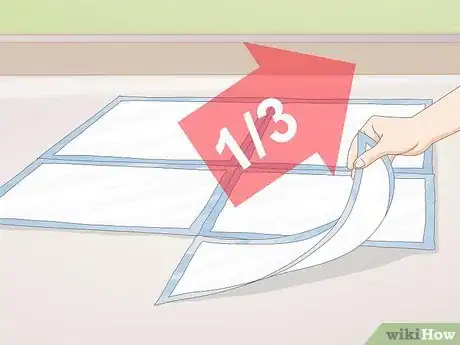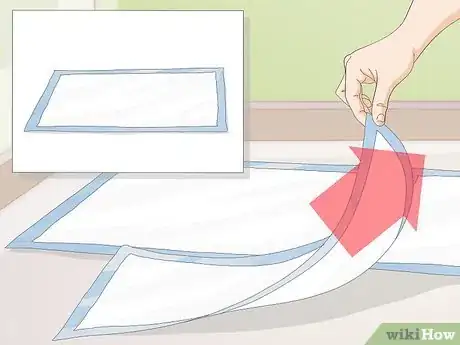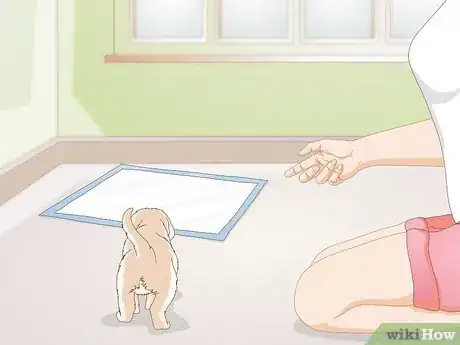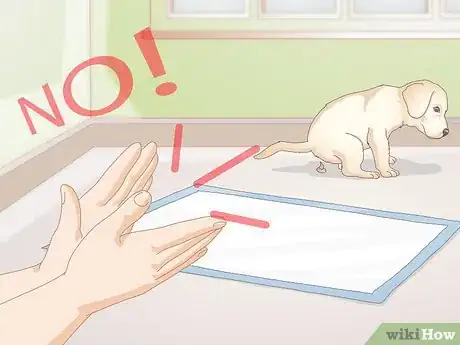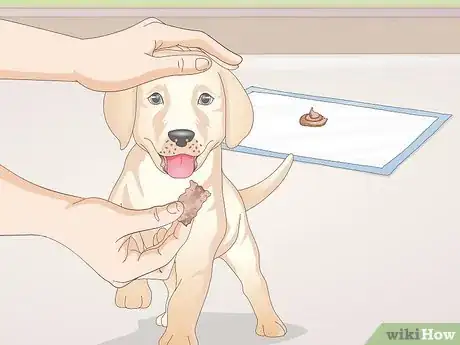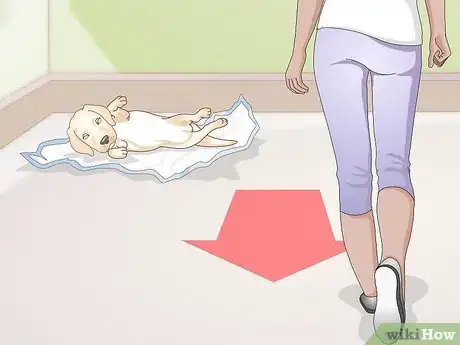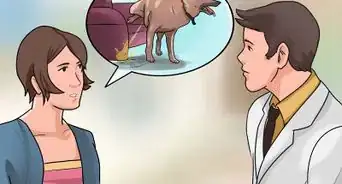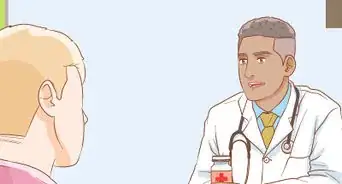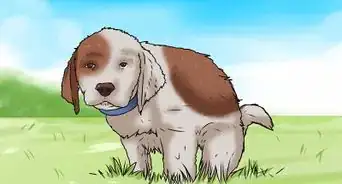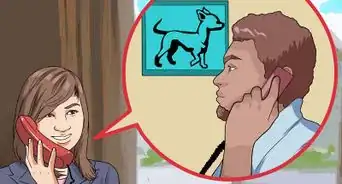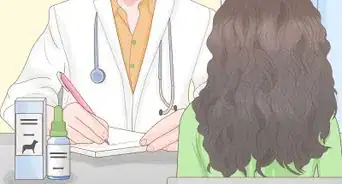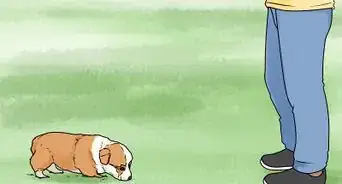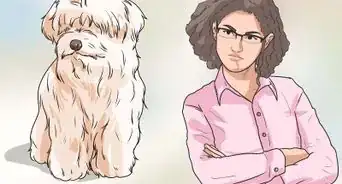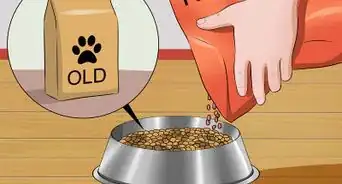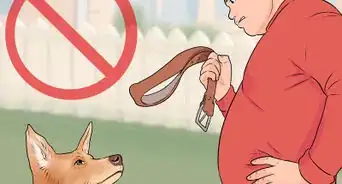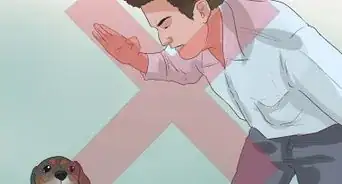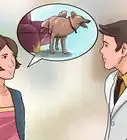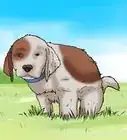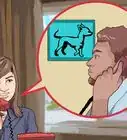This article was co-authored by Beatrice Tavakoli. Beatrice Tavakoli is a Professional Dog Trainer and the Founder/Owner of TAKA Dog Walk in New Jersey. A lifetime dog lover and enthusiast, Beatrice is committed to providing animals with hands-on service dedicated to daily love, adventure, and socialization. As insured and bonded dog walkers, Beatrice, and her staff provide a multitude of services including doggie social hour, day hikes, training, puppy care, canine special events, in-home pet care, boarding, cat care, and customized dog walks.
There are 7 references cited in this article, which can be found at the bottom of the page.
wikiHow marks an article as reader-approved once it receives enough positive feedback. In this case, 100% of readers who voted found the article helpful, earning it our reader-approved status.
This article has been viewed 69,623 times.
If you work long hours, or if your dog has difficulty getting outside, you could greatly benefit from paper training. When you paper train your dog, you teach it to eliminate on a small pad or pile of newspapers in your home. It's similar to teaching a cat to use a litter box. With a little time and dedication, most dogs can be successfully paper trained.
Steps
Beginning the Training Process
-
1Select an indoor potty area. The first step to paper training is to choose an indoor potty area. The training area you choose should be where you want your dog to eliminate longterm. There are several factors to consider when selecting a location.[1]
- First off, consider where you're comfortable having your dog eliminate. While the linoleum floor in the kitchen may be easier to clean in the event of an accident, do you really want your dog eliminating near where you eat? Maybe the bathroom would be a better choice.
- Second, you need to confine your dog to this area during training. Choose an area in your home you can easily block off with baby gates or by closing a door. You will be slowly reducing the confinement area over time, until your dog eliminates in only a small corner of your home.
-
2Line the confinement area with puppy pads or newspaper. To start, you will need to prepare the confinement area. This is the area where your dog will be eliminating longterm. At first, give your dog a great deal of space. Line newspapers or puppy pads all around the general area where you want your dog to eliminate.[2]
- Make sure to line the entire area. You may need to overlap newspaper or pads a little just to make sure there are no gaps in coverage.
- Puppy pads are probably a better option than newspapers, as they're more absorbent.
Advertisement -
3Confine your dog to this area while you're gone. When you leave your home, leave your dog in the confinement area at all times. This way, if it needs to eliminate, it will do so in this area and not have an accident elsewhere. The dog will begin to get used to using the confinement area while you're away.[3]
-
4Observe your dog when you're home. When you're home, you will have to encourage your dog to use the confinement area. This means you'll need to observe your dog and watch for signs, such as squatting and sniffing, that indicate it needs to eliminate.[4]
- If you see your dog is preparing to eliminate, encourage it to use the confinement area. You can lift your dog up and bring it to the confinement area. You can also call it and direct it to the confinement area.
- Praise your dog when it eliminates on the newspaper or puppy pads. This will help your dog understand where it needs to eliminate.
Finishing Training Your Dog
-
1Reduce the size of the confinement area. After a few days, take a few sheets away in the confinement area. You should remove about a third of the sheets.[5]
- Progress with training as you did before. Once again, leave the dog in the reduced confinement area while you're gone. Encourage your dog to use the confinement area when you're home.
-
2Continue to reduce the confinement area. Keep reducing the size of the confinement area by about a third each day. Remember, you want your dog to eliminate in a small corner of your house, much like a cat uses the litter box. Aim to get the confinement area down to a suitable size.[6]
- How long this will take varies. It depends both on the size you're aiming for and how quick your dog learns. It can take anywhere from a few weeks to a few months.
- Not all dogs will progress at the same rate. If your dog seems to be struggling to eliminate on the paper after you remove some pads, put the pads back in place for a few days. Wait a few days before attempting to reduce the confinement area again.
-
3Encourage your dog to use the confinement area when you're home. You want to continue to encourage your dog to use the area. As you reduce the size, keep watching your dog throughout the day. Again, if you notice your dog squatting or sniffing, direct it to the confinement area.[7]
- Do not be surprised if your dog is a little confused. It may eliminate where the paper used to be and not on the new paper.
- Try to get your dog to understand it needs to eliminate on the paper and not near it. Be stricter as your dog's training progresses. During the first few days, your dog eliminating near the paper can warrant praise. As time goes by, only offer praise when your dog eliminates on the paper.
-
4Correct your dog gently for eliminating outside the confinement area. Scolding or punishing a dog aggressively will not help the training process. You should also avoid scolding your dog well after it's had an accident. Your dog will not understand why it's being punished if you do not address the behavior immediately. Think of it as correcting the behavior rather than scolding or punishing your dog.[8]
- Interrupt the dog when you see it eliminating off the newspaper or padding. You can clap your hands and say something like, "No!" to distract your dog.
- Immediately take your dog to the bathroom spot. Allow it to finish eliminating there and then offer a treat as a reward.
-
5Reward your dog for eliminating on the paper. Praise your dog when it uses the newspaper. You do not want to distract your dog while in the middle of the act, so wait until it's done to offer praise. Praise them using an upbeat, distinct tone of voice and say something like, "Good job!" You can offer treats as a reward as well.[9]
Avoiding Pitfalls
-
1Learn when paper training is appropriate. Not all dogs will benefit from paper training. It can actually have a negative impact on your dog's health, as regular walking and exercise are important for a dog's well being. In certain circumstances, however, paper training is appropriate and even preferable. If you do decide on paper training, make sure to play with your dog a lot indoors. Smaller dogs are easier to exercise without going outside.
- If you are unable to let your dog outside due to medical reasons, paper training is a good option.
- If you have a full-time job that prevents you from letting your dog out during the day, paper training is a good idea. You don't want to confine your dog to a crate during the daytime.
- If you live in an area with bad winters, you may want to paper train your dog at least during the colder months.
-
2Back up a few steps if your dog is struggling. It's normal for dogs to stumble over a few steps when paper training. If your dog seems to be struggling at a certain point, back up a few steps. If your dog starts having accidents after you reduce the size of a confinement area, restore the area to its original size. Wait a few days before reducing the size again.[10]
- All dogs will progress at different rates. Your dog may pick up paper training in a few weeks. Other dogs may take a few months to learn.
-
3Keep the confinement area clean. You wouldn't want to use a toilet that's not flushed, so don't make your dog use dirty paper. Once it's been soiled, replace it right away. Otherwise, you dog may pee in other areas in the home. You should clean the newspaper about once a week.[11]
-
4Make sure to use positive reinforcement. It's important your dog understands when it's behaving properly. Make sure to reward your dog for eliminating on the paper towels.[12]
- You can praise the dog using your voice. Say something like, "Good boy!"[13] You can also offer a small treat. Just make sure not to give your dog too many treats per day. Try breaking up bigger treats into small, bite-sized portions.
- Always reward in the immediate moment. This is the only way to get your dog to understand why it's being rewarded. However, make sure you wait until the dog's done eliminating. It may get distracted otherwise and stop eliminating on the paper.
Expert Q&A
-
QuestionHow long does it take to potty train a puppy using a crate?
 Beatrice TavakoliBeatrice Tavakoli is a Professional Dog Trainer and the Founder/Owner of TAKA Dog Walk in New Jersey. A lifetime dog lover and enthusiast, Beatrice is committed to providing animals with hands-on service dedicated to daily love, adventure, and socialization. As insured and bonded dog walkers, Beatrice, and her staff provide a multitude of services including doggie social hour, day hikes, training, puppy care, canine special events, in-home pet care, boarding, cat care, and customized dog walks.
Beatrice TavakoliBeatrice Tavakoli is a Professional Dog Trainer and the Founder/Owner of TAKA Dog Walk in New Jersey. A lifetime dog lover and enthusiast, Beatrice is committed to providing animals with hands-on service dedicated to daily love, adventure, and socialization. As insured and bonded dog walkers, Beatrice, and her staff provide a multitude of services including doggie social hour, day hikes, training, puppy care, canine special events, in-home pet care, boarding, cat care, and customized dog walks.
Professional Dog Trainer Training never stops—it's all about consistency and patience. Start by keeping the puppy in a crate that's covered by a blanket or towel so they feel cozy and calm. Let the dog out every 2-3 hours initially to go potty on a pad right outside of the crate. Give the dog major praise when they go on the pad. If they go anywhere else, tell them No firmly, then feed them in that spot at their next meal, because dogs don't go to the bathroom where they eat.
Training never stops—it's all about consistency and patience. Start by keeping the puppy in a crate that's covered by a blanket or towel so they feel cozy and calm. Let the dog out every 2-3 hours initially to go potty on a pad right outside of the crate. Give the dog major praise when they go on the pad. If they go anywhere else, tell them No firmly, then feed them in that spot at their next meal, because dogs don't go to the bathroom where they eat.
Warnings
- Don't leave newspapers lying around the house, your dog may pee on them.⧼thumbs_response⧽
- Don't yell at your dog if they've messed outside the paper, especially after it's happened. It will confuse your dog and make them feel ashamed, which hinders their progress.⧼thumbs_response⧽
References
- ↑ http://thehousebreakingbible.com/wp/training-indoor-potty-training/
- ↑ http://www.labradortraininghq.com/labrador-training/how-to-paper-train-a-puppy-or-dog/
- ↑ http://thehousebreakingbible.com/wp/training-indoor-potty-training-method1/
- ↑ http://www.labradortraininghq.com/labrador-training/how-to-paper-train-a-puppy-or-dog/
- ↑ http://www.labradortraininghq.com/labrador-training/how-to-paper-train-a-puppy-or-dog/
- ↑ http://www.labradortraininghq.com/labrador-training/how-to-paper-train-a-puppy-or-dog/
- ↑ http://thehousebreakingbible.com/wp/training-indoor-potty-training-method1/
- ↑ http://www.humanesociety.org/animals/dogs/tips/housetraining_puppies.html
- ↑ http://pets.webmd.com/dogs/guide/house-training-adult-dogs?page=4
- ↑ http://www.labradortraininghq.com/labrador-training/how-to-paper-train-a-puppy-or-dog/
- ↑ http://thehousebreakingbible.com/wp/training-indoor-potty-training-method1/
- ↑ http://www.humanesociety.org/animals/dogs/tips/housetraining_puppies.html?referrer=https://www.wikihow.com/index.php?title=Paper-Train-Your-Small-Dog&action=submit
- ↑ Beatrice Tavakoli. Professional Dog Trainer. Expert Interview. 26 February 2021.
About This Article
To paper train your small dog, designate an area in your house where you want your dog to eliminate its waste and line it completely with puppy pads or newspaper. When you leave your home, confine your dog to this space so that if it needs to eliminate, it will do so in the right place. When you’re at home, watch your dog for signs that it needs to use the bathroom, like sniffing or squatting, and encourage it to use the designated area with praise. After a few days, take a few sheets of paper away from the space, gradually reducing it each day until your dog is using just one sheet of puppy paper. For more tips from our Veterinary co-author, like how to avoid common training pitfalls, keep reading!
